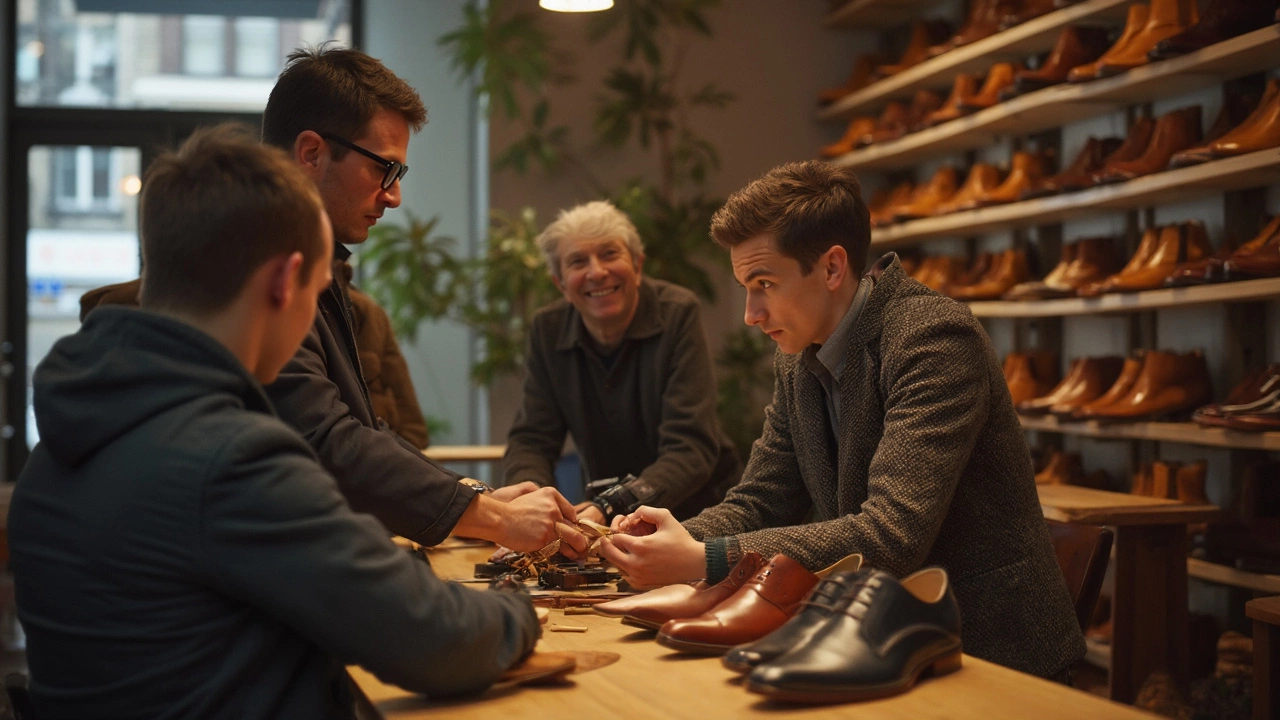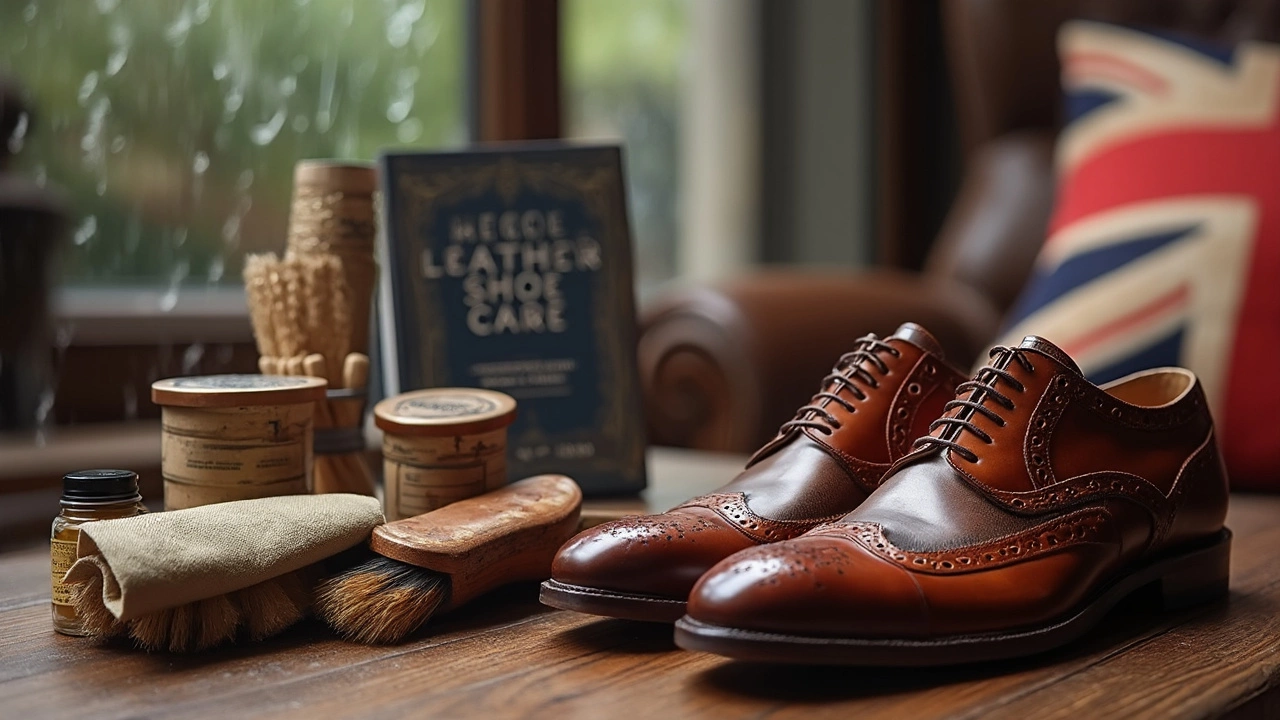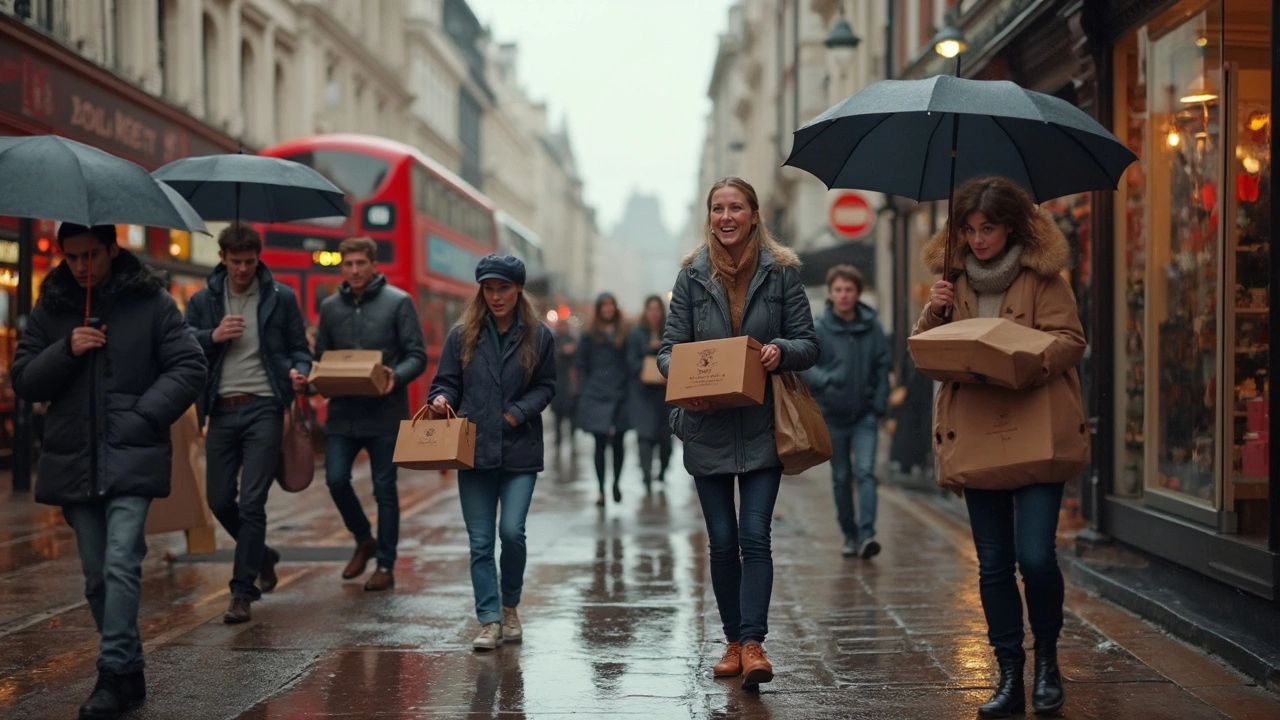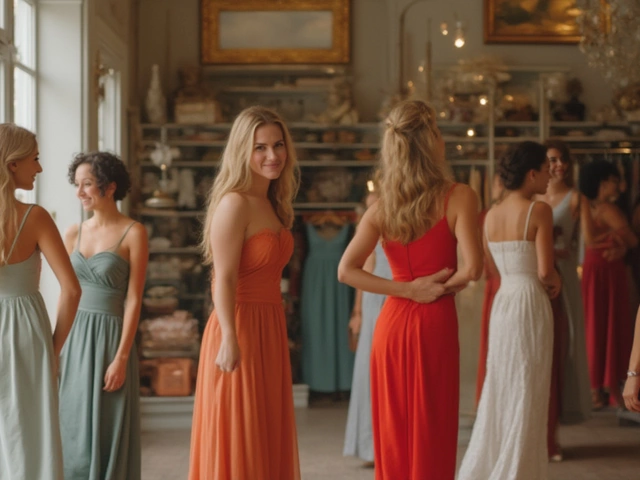Should Leather Shoes Fit Tight or Loose? The Truth About Getting the Perfect Fit

- Cleo Fairchild
- 30 June 2025
- 0 Comments
You buy a sharp pair of leather shoes. You slip your feet inside, stand tall, and... something’s off. One toe’s throbbing, or maybe your heel keeps sliding up and down. Maybe both. And there it is—the age-old question: should leather shoes be tight, or should they be loose? There’s a world of split opinions on this, but only one answer actually feels right when you’re the one doing the walking.
The Science (and Art) of Leather Shoe Fitting
Let’s clear up a rumor—leather shoes do stretch, but they’re not going to double in size. High-quality leather has natural give, yet it’s not elastic like a pair of sneakers. At best, good leather shoes might stretch up to half a size after some real-world wear. But here’s the catch: if you buy shoes that are much too tight, waiting for miracles isn’t going to help. Why do people think tighter is better, then?
Most shoe salespeople argue that a snug fit is ideal, especially with leather, because the material is supple and will form to your foot. Technically, they’re half right. But if “snug” turns into “painful,” you’re going to end up hating those shoes—or worse, causing long-term damage to your feet. Tight shoes cut off blood flow. According to a report by the College of Podiatry, over 60% of people are wearing shoes that don’t even fit. Crazy, right? And the results aren’t pretty: blisters, bunions, nerve pain… None of this is what you want from those show-off loafers or smart Derbies.
On the flip side, loose shoes bring their own problems. They let your foot slide, meaning you’ll end up with raw heels and a walk that feels awkward and unstable. If your shoe slips as you stride, you’re in for a clunky ride, not that effortless glide. The risk of falls literally goes up too, especially on stairs or wet streets—hardly an elegant look. Loose shoes crease more, wearing out the leather and reducing their lifespan.
Think of it like bedding. A mattress that’s too hard or too soft ruins your sleep. Shoes are your foot’s mattress for the day. You need that Goldilocks ‘just right’—snug at first, but not suffocating, with a small allowance for leather to relax. But don’t count on those old mum-tricks like wearing three pairs of socks or soaking shoes in water to help stretch them. These ‘hacks’ can warp the leather and ruin the lining. Instead, focus on knowing your exact size and shape. If you are in a shop, ask for a Brannock device measurement—those old-school silver ones that get the job done.
Here’s a fast table to sum up what goes wrong when you ignore fit and just chase looks:
| Too Tight | Too Loose |
|---|---|
| Painful toes, blisters, bunions, poor circulation | Heel slippage, lack of support, blisters, unstable gait |
| Leather overstretching (deforms shoe), numbness | Excessive creasing, shoe wears out faster |
The ‘science’ part? Get professionally measured, and make sure snug doesn’t mean cramped. What about the ‘art’? Every brand and model fits a little differently. Your job is to find what suits your foot—not to squeeze your foot to suit the shoe.
What ‘Good Fit’ Really Means for Leather Shoes
So what does good fit look—and feel—like? You know your leather shoes fit right when your foot feels gently hugged but you have enough space to wiggle your toes. Pressure shouldn’t pinch. There should be about a half-inch between your longest toe and the shoe tip. If you’re ordering online and unsure, trace your foot on paper, measure it, and compare to the brand’s sizing chart—don’t just order your usual size from sneakers and hope for the best. Sizing can shift by brand and country, so get specific.
Here’s a real tip: Try them on at the end of the day. Your feet swell from morning to night (sometimes up to half a size)—if you fit your shoes in the afternoon, you’ll avoid that tight pressure come 5 p.m. And yes, always wear the socks you plan on pairing with the shoes. Thin dress socks change the fit a lot compared to thick boot socks.
Next, stand up. Slide your index finger (or better, your pinky) behind your heel inside the shoe. It should fit, but just barely. Your foot shouldn’t slide forward more than a few millimeters. If your heel lifts as you walk, or if you see a big gap, the shoe is too loose. But if you struggle to even get your foot in or your toes curl upward, the fit is too tight. “Break-in” should only mean the leather softly relaxing—not you suffering blisters every time you walk a block. There’s also the width—shoes come in more than just ‘regular’ sizes. If you have a wide or narrow foot, look for those options. Most people just buy “medium” width out of habit, but a quick check can save months of discomfort.
Most podiatrists agree: if you find you need insoles, heel grips, or piles of band-aids just to survive the day, your shoe’s not a good fit. Listen to your feet, not just your eyes—it’s easy to fall in love with a style and ignore that nagging ache. But trust me, nobody’s chic when they’re limping.

Breaking In Leather Shoes: Myths and Better Ways
Let’s shatter a myth: leather shoes shouldn’t torture you. If you expect agony for weeks, something’s wrong. Yes, new leather shoes will ‘give’ a little—maybe 10% of their shape—but their base fit should already be right. Worn correctly, breaking in just means the inner leather gently forms to your foot’s unique contours. If you feel stabbing pain, raw spots, or numbness, that’s not a “break-in” phase—it’s a bad fit screaming for help.
People try all sorts of crazy tricks to ‘hurry up’ break-in. Stuffing shoes with socks and blasting them with a hairdryer. Wearing wet shoes to try and stretch them (yikes, don’t do this). These can ruin nice shoes and even lead to mold inside. Instead, try these low-risk tips:
- Wear them inside the house first. Try half-hour bursts to let your foot shape the leather gently.
- Use thin socks to minimize bulk, then move to your regular socks once the leather relaxes a little.
- If there’s tightness on the sides or toe box, use a cedar shoe stretcher—not brute force, just a light expansion over nights.
- Apply leather conditioner to soften up stiffer spots so they mold to your feet more easily.
- If you experience discomfort, don’t push through it. A professional cobbler can stretch a trouble spot by a few millimeters without damaging anything.
Here’s a fun fact: some luxury brands, like John Lobb and Edward Green, hand-build shoes over wooden “lasts” shaped exactly like your foot. That’s why they fit like a dream from day one—handmade shoes at that level can cost over $2,000. But for most of us buying off-the-rack, taking things slow and paying attention to how your feet feel is the best way to make leather shoes fit perfectly—without days of blisters and regrets.
How to Shop For Leather Shoes That Really Fit
Buying shoes online isn’t getting less popular—shoppers in the US bought nearly 30% of all their footwear online in 2024, says Statista. But leather shoes are one category where trying before buying really pays off, at least the first time you try a specific brand or model. Here’s what works when hunting for the perfect fit:
- Measure your feet while standing, wearing the socks you plan to use.
- Measure both feet—most people’s left and right feet differ by up to half a size! Always fit the larger foot.
- Try shoes on at the end of the day to get a true sense of swelling.
- Walk around the store (or your house, if online) on a hard surface, not soft carpet. You’ll notice slipping or pinching more easily.
- Check for pressure points: do you feel hot spots in your toe box, sides, or arch? If yes, try a different size—or width!
There’s more to sizing than just the number on the box. The best fit for leather shoes also depends on the shoe’s last, or shape. For example, Italian brands often cut narrower and with a higher arch; British brands tend to run wide, especially in dress styles. Women’s shoes tend to be narrower by default, which frustrates wider-footed shoppers all the time. Keep notes about which brands and models fit you best, so the next purchase is easier. And if you do buy online, confirm there’s a decent return policy before committing.
Here’s a little shoe-insider trick: bring along orthopedic insoles if you use them already—test new shoes with the insole in place, or risk sizing wrong. Add a small heel grip only if absolutely needed; these should be a band-aid fix, not a lifestyle.

Tips for Keeping Leather Shoes (and Your Feet) Happy
Getting good fit at the start isn’t the whole story. Leather shoes need care to stay comfy. If they get wet, stuff them with cedar shoe trees to absorb moisture and hold their shape. Don’t leave them near a heater; too much heat dries and cracks leather.
Polish shoes regularly—conditioned leather is flexible, so it molds to your foot and avoids cracking where it bends. Store them with shoe trees, not crumpled in a closet, to reduce creasing. If you’re swapping shoes daily, that’s perfect—it gives each pair 24 hours to air out and recover, and your shoes will last way longer.
If you find a spot where the shoe rubs, but fits fine elsewhere, moleskin pads or gel dots can help short-term. But don’t ignore big fit issues. Feet change with age, weight, and even season. Maybe your size creeps up after pregnancy or a new workout program. Never assume you’re locked into one size forever; measure every couple of years if you’re buying pricier shoes.
And here’s the simplest tip: listen to your feet. If you dread putting on your shoes every morning, something’s wrong. Leather shoes should feel like a second skin eventually. You want ‘supportive hug’—not a vice grip, not a floppy glove.
After all, even the priciest loafers are a waste if they turn every sidewalk into a struggle. A true well-fitted pair? It’s quiet confidence, painless steps, and shoes that look better for years. Your feet do a lot for you—don’t squeeze or neglect them for style. Happy walking!


